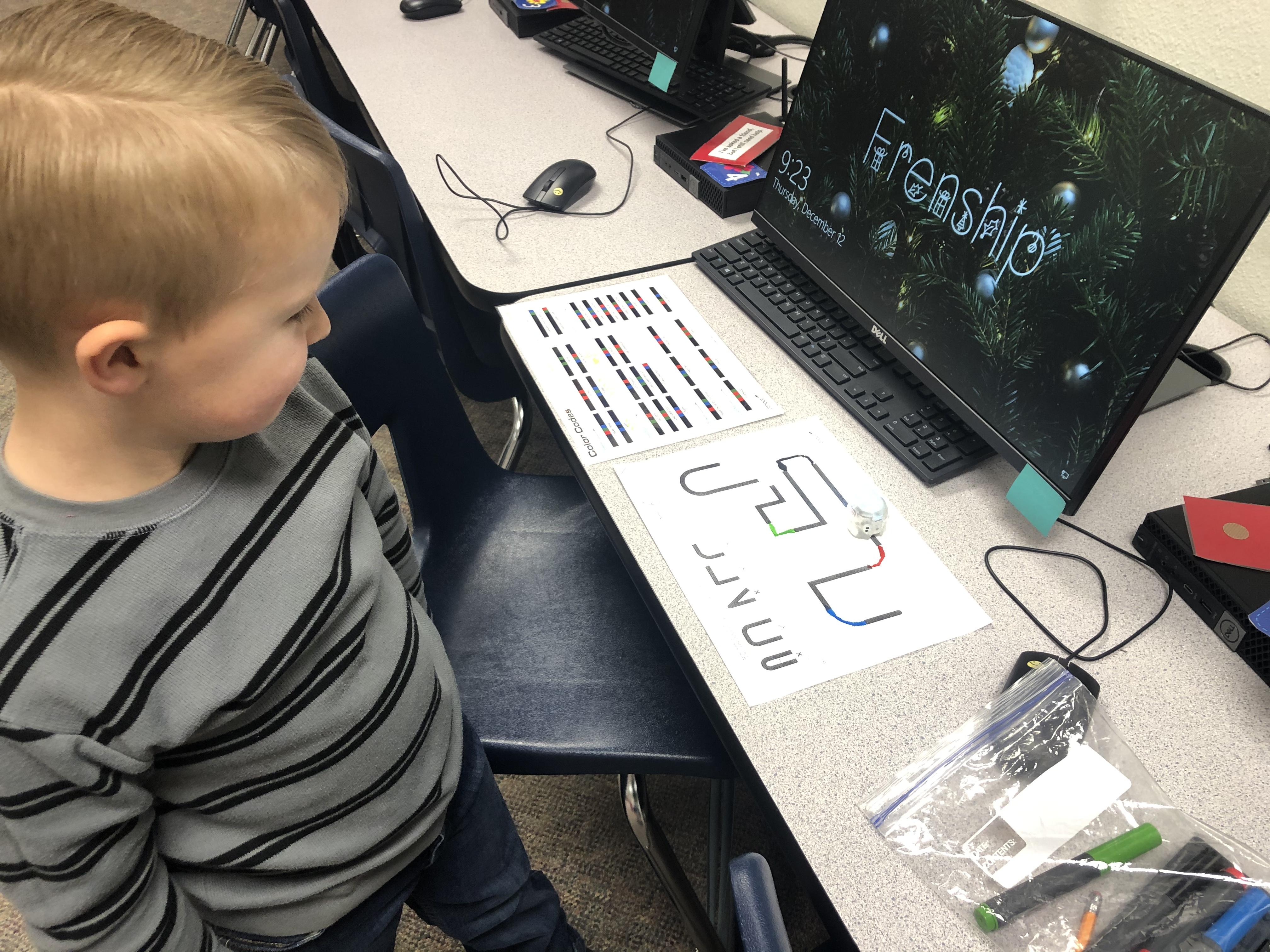Sandra Dannemiller, Computer Instruction teacher at Willow Bend Elementary, has a goal for every one of her students to be proficient in many technological skills when they leave her classroom. From navigating the internet safely, creating newsletters and graphics, to learning Microsoft Office and coding, Mrs. Dannemiller provides her students with different projects and activities to introduce them to the world of computer science.
 The "Hour of Code" is something that the computer classes at Willow Bend participate in every year. It is a one-hour introduction to computer science that teaches the basics of coding and allows students to create games and interactive projects.
The "Hour of Code" is something that the computer classes at Willow Bend participate in every year. It is a one-hour introduction to computer science that teaches the basics of coding and allows students to create games and interactive projects. "My passion is coding," said Mrs. Dannemiller. "I try to incorporate it throughout the school year in hopes of encouraging students interest in computer science."
Mrs. Dannemiller's father-in-law, who is an Aerospace Engineer at NASA, encouraged her to introduce her students to the world of coding. She stared coding lessons in 2013 and never looked back.
"Coding teaches students problem-solving, sequencing, design, critical thinking, persistence and math skills," said Mrs. Dannemiller. "They get so engaged and are not afraid to find a solution to a problem. I really enjoy seeing the collaboration and teamwork it takes to achieve different tasks."
 Code.org provides materials for all ages and each grade level, even for pre-readers and first-time coders. Mrs. Dannemiller says the website provides many exciting and unplugged projects that encourage students to think about algorithms and different events in coding.
Code.org provides materials for all ages and each grade level, even for pre-readers and first-time coders. Mrs. Dannemiller says the website provides many exciting and unplugged projects that encourage students to think about algorithms and different events in coding. "First graders created a game for their 'robot,' who was a fellow student, to navigate through an obstacle course," said Dannemiller. "They had to give instructions, or codes, through different hand signals to their partner. My third-grade students learned about algorithms and wrote steps on how to create a paper airplane. Other classes used sequencing skills to write code for a character in the game Minecraft."
The older students took their coding to the next level by programming their own set of Ozobots to move in specific directions and perform different tasks.
"Students began to write color code to make their Ozobots move on a certain path," said Dannemiller. "They used the computer to program their robots to perform different tasks and eventually raced against other Ozobots and explored different lines of code to make their Ozobot move faster."
She said the students love coding and have learned that it's as simply giving instructions to a computer.





